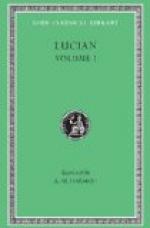The line was about three-quarters of a mile in length, and the attack was made by two strong bodies of Indians. One of these came up from the ford named after the hero and victim of the day. It was led by a daring Indian, with some knowledge of generalship, and his followers were of a very superior class to the average red man. This body of attackers did great execution and succeeded in almost annihilating the white men against whom they were placed, and whom they outnumbered so conspicuously. From the meagre information concerning what took place that is accessible, it appears as though the execution of these men was almost equal to that of skilled sharp-shooters. A reckless Indian named “Crazy Horse” was at the head of a number of Cheyennes who formed the principal part of the second attacking body. These encountered Custer himself, and the men immediately under his orders. Outnumbering the white men to an overwhelming extent, they circled around, and being reinforced by the first column, which by this time was elated by victory and reckless as to its brutality, it commenced the work of blotting out of existence the gallant cavalrymen before them.
Most of Custer’s men knew the nature of their destroyers too well to think of crying for quarter or making any effort to escape. There was a blank space between the ridge on which the battle was fought and the river below. Some few men ran down this spot in hopes of fording the river and finding temporary hiding places; they prolonged their lives but for a few minutes only, for some of the fleetest Indians rushed after them and killed them as they ran. The horse upon which Captain Keogh rode into the battle escaped the general slaughter, and found its way back once more to civilization. Of the way it spent its declining years we have already spoken.
With this exception, it is more than probable that no living creature which entered the fight with Custer came out of it alive. A Crow scout named “Curley,” claims that he was in the fight, and that after it was over he disguised himself as a Sioux, held his blanket around his head and escaped. “Curley’s” statement was never received with much credence. The evidence generally points to the fact that, prior to the battle, nearly all the Indian scouts who were with Custer on the march ran away when they saw the overpowering nature of the foe. “Sitting Bull,” who has since met the fate many believe he deserved, also claimed to be in the fight on the other side. His story of the prowess of Custer, and of his death, was probably concocted with a view to currying favor with white men, as it appears evident that “Sitting Bull” showed his usual cowardice, and ran away before there was a battle within twenty-four hours’ distance.
Major James McLaughlin, during his experience as Indian Agent at Standing Rock Agency, North Dakota, had an opportunity of gathering a great deal of important information with reference to the battle-field and incidents connected with it. At the request of Mr. Wheeler, whose researches into the legends and history of interesting spots within easy access by means of the Northern Pacific Railroad were most successful, obtained from the Major the following valuable information concerning many points of detail which have been the subject of debate and dispute:




